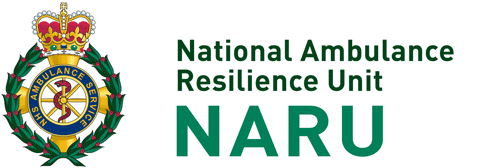How do you train paramedics to care for people caught up in the most hazardous environments including terrorist attacks?
Dave Bull QAM is Head of Education at NARU, which ensures that the NHS ambulance service is effectively trained and fully equipped to provide the best front-line healthcare during the most complex incidents. Here he explains more about the vital role of providing specialist ambulance service training and education, and why realism matters:

“ A core part of my role is to train paramedics to become Hazardous Area Response Teams (HART) operatives. These are paramedics based in the 10 English ambulance trusts around the country trained and skilled in saving lives in highly hazardous scenarios.
In the last year these teams have been busier than ever with an average of more than 270 jobs per week nationally. These have included hazardous materials and chemical, biological, radiological and nuclear incident deployments as well as inland water rescue, supporting firearms teams as well as high-risk events.
In June 2022 NARU put a group of newly trained operatives and other trained teams into one of the most challenging exercises to test this interoperable capability – a terrorist attack.
An exercise in interoperability
In this, 52 specialist hazardous area paramedics tackled a terrorist incident exercise involving firearms and explosions. It also involved a car, a train carriage, a bus and a coach teetering over the edge of a hill.
Called Exercise Amber, the scenario involved 120 casualties and was designed to test 24 paramedics’ skills and abilities following 6 weeks of residential training to become HART operatives.
In addition, 8 previously trained HART staff took part alongside 20 Special Operations Response Teams (SORT) staff – who are now trained to support HART teams.
Exercise Amber, which involved a state-of-the-art command and control vehicle, a drone capable of thermal imaging and an air ambulance, tested the complex interoperable response required by the NHS Ambulance Service to a mass casualty incident.
The scenario was a marauding terrorist attack (MTA) and involved more than 340 people on site – including specialist casualty actors (Amputees in Action).
A challenging scenario
This was probably one of the most challenging and demanding scenarios that we can envisage. In this scenario, locations were ever changing as they would in real life with firearms police establishing ‘safe zones’ for paramedics to enter as the exercise progressed.

Our focus was to get the paramedics as forward as quickly as possible, or in this case as the firearms police allow, and deliver lifesaving care. This includes immediate assessment, triaging, the use of decontamination equipment, drones to identify where patients are, air ambulances as well as ambulances to ferry patients to hospitals.
Why realism matters
At the same time, we strive for realism. So, for Exercise Amber we used explosives and firearms experts who recreated the sounds of the terrorist attack, actors in full make-up as well as amputees for added realism. It’s about immersing delegates. A little bit of shock. But on the whole, it’s about getting it as close as possible to the real thing.
Where mistakes are made – whether that’s during command aspects or clinical treatment – we use this as vital learning.
The exercise was a huge success and really tested our newly trained paramedics to be HART operatives and the ability of our SORT teams to provide support. Ambulance trusts from around the country also took part.




Shared learning around the globe
Interoperability is really important so that HART teams from different trusts are able to work together, using the same equipment, the same safe systems of work, the same procedures and the same personal protective equipment. This is vital so that, in the terrible event of a real-life attack, as many lives can be saved as possible.
Our training has attracted international attention and we have been contacted by the FBI, Homeland Security as well as Australian authorities amongst other first responders around the world.
Resilience is absolutely key to us at NARU and exercises such as this are vital to bolstering our skills. I’d like to thank all the NARU staff and other responders who played important roles in making this exercise happen and the work they do everyday to ensure the NHS Ambulance Service is ready for anything.”
This interview also appeared in the Emergency Services Times. You can download a PDF version here.
